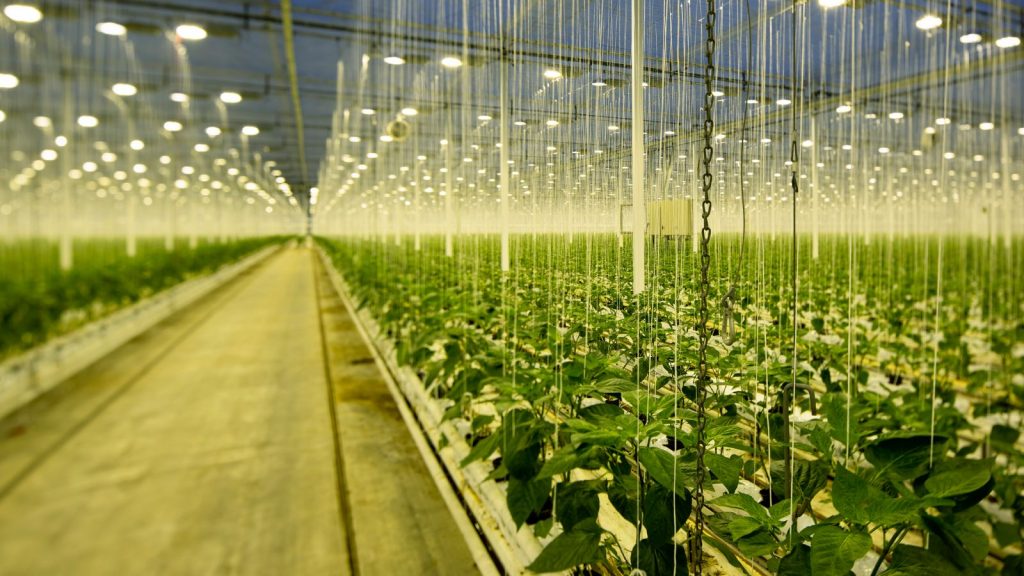
A tech-tonic shift: the sustainable makeover in retail and consumer goods
A tech-tonic shift: the sustainable makeover in retail and consumer goods
The consumer sector has undergone significant digital transformation in recent years, with the exponential rise in online retail. This revolution now comprises ESG, with companies striving to accelerate sustainable practice through the optimisation of digital tools.
As detailed in our ‘Sustainable, smart and synchronised: using technology to accelerate the ESG transition’ report, both digital and sustainable transformation enable consumer goods and retail companies to future-proof themselves in meeting the evolving demands of a new cohort of consumers, including the rise of Gen Z.
Both transformations can work in tandem to mutually complement one another as they remain ahead of the field in strategic importance for the companies that fall within the consumer sector. Indeed, our latest C suite barometer highlights that 29% of companies now claim that a new and/or revised sustainability strategy is a key priority over the next three to five years, whilst 32% claim transforming company IT and technology as critical.
Invest in a sustainable future
In the ever-evolving landscape of business trends, sustainability currently stands paramount, expected to shape strategies over the next decade. Despite concerns about the buzzword nature of sustainability, its roots run deep, affecting various aspects of company operations. Albeit we would naturally expect people to spend less on sustainable products in the face of inflation and a cost-of-living crisis, the current data supports the contrary, proving that consumers are instead leaning towards these. Indeed, the data indicates that only 5% of consumers are labelled as apathetic when it comes to buying sustainable products, whereas roughly 95% show a deep commitment to buying sustainable items. This is particularly true for Gen Z, with whom ESG matters resonate deeply, for they will be personally impacted by weather or climate in the coming decades.
There are also considerable market opportunities for companies embracing sustainability at the core of their strategies, with a McKinsey report finding that over 60% of respondents would pay more for a product if it were sustainable. Indeed, data from our global C-suite barometer reveals the prominence of sustainability on corporate agendas, with leaders showing their commitment to shaping a sustainable future, and over two-thirds planning to increase investment in sustainability initiatives. Ethical considerations, coupled with the growing trend of public disclosures, therefore contribute to creating a business case for change.
Further, while there are sustainability initiatives like the Task Force on Climate Related Financial Disclosures (TCFD), which provides information to investors about what companies are doing to mitigate the risks of climate change, as well as transparency about the way in which they are governed, there remains nonetheless real opportunity and potential for companies that integrate sustainability into their core strategies, rather than reference ESG merely as an afterthought. This growth in sustainability involves a holistic approach, encompassing supply chains, packaging, logistics, and analysis regarding where companies are procuring products or raw materials from. It is also vital to ensure collaboration across departments including marketing, R&D, and finance, to discuss the company’s strategy and define where to develop and grow to become more sustainable.
Consumer goods and retail companies must therefore devise ways besides TCFD, reporting, and disclosures, to optimise their marketing to appeal to this generation by effectively conveying their messages about how they are differentiating themselves to become more ethical. Further, businesses must also optimise their packaging and labelling of products to see how the item is positioned, as most consumers will not go onto a company’s website to look for their annual reports or sustainability credentials, meaning that packaging can be leveraged as a tool to drive sales growth over the longer term.
Harness digital technology to facilitate the customer experience
In tandem with sustainability comes the transformative power of technology, which encompasses artificial intelligence (AI), as well as predictive analytics tools. Altogether, these tools create numerous benefits for marketing and consumers alike, such as enhancing sustainability across sourcing, production, and distribution, in addition to helping create a shopping experience that effectively caters to the customer. The targeted marketing strategies on social platforms such as Facebook and X, tailor content to individual preferences for a more personalised customer experience. As such, it uses data on how and what people consume products so as to segment individuals based on their references to show them the most relevant product which they can then click on and later buy. The emphasis is not only on the marketing aspect though, for it is also on revolutionising the whole buying experience, rendering it intuitive and targeted, thereby facilitating convenience for the consumer. As consumers prioritise price, convenience, and quickness, companies are focussing on creating slick websites and efficient processes to meet these expectations.
In the pursuit of sustainability, companies encounter diverse challenges that hinder their seamless integration into their operational frameworks. Digital transformation, a pivotal element in this evolution, intertwines with cybersecurity, given the prevalent reality that every company faces or will face hacking incidents. Indeed, C-suite executives recognise technology as an economic catalyst for their business, consider investment in this area a top priority, and are confident in their ability to deal with new technologies and manage cyber risk. The alterations induced by the pandemic extended beyond sustainability motives, delving into the realm of ensuring supply chain security. Notable shifts were observed, altering the landscape of supply chains; however, these adjustments were primarily motivated by securing supplies rather than sustainability concerns.
There are financial considerations, too, with every company in the current climate using digital as a way of becoming more efficient. Indeed, having a more digital interim process, digital footprint, and looking at the controls around your configuration, your systems, and having fewer manual inputs, as well as missing manual processes, means that the control environment is going to be more efficient and more cost-effective, in addition to providing more assurance to the board and C suite.
Ultimately, businesses must strike a delicate balance between sustainability, AI-driven personalisation, and the practical considerations of price and convenience to cater to the diverse needs of individual customers. The convergence of these trends signifies a dynamic era where companies navigate a complex landscape to stay attuned to evolving consumer demands.
For more information on our global consumer report, or how Mazars can help you to transform your business, please get in touch.
Download ‘Sustainable, smart, and synchronised’




































